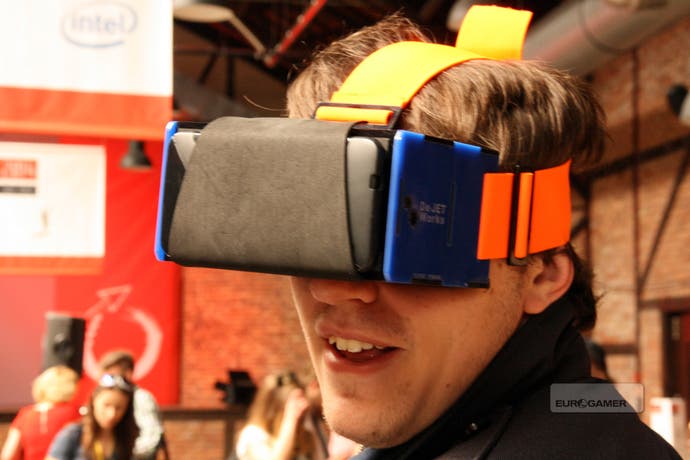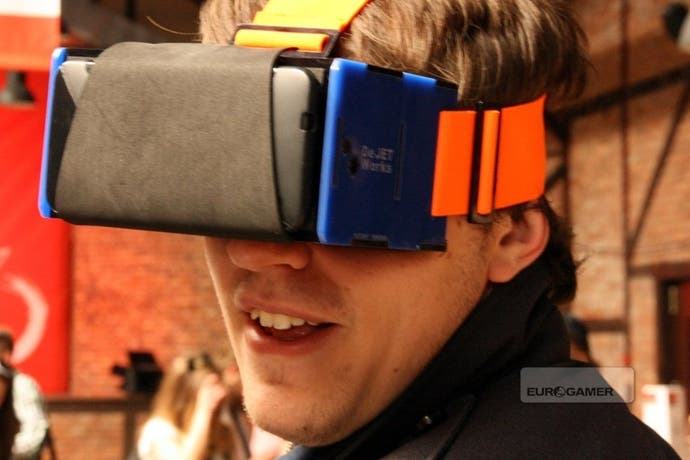A €50 virtual reality headset powered by your mobile phone
That upgrades when your phone does.
What if I told you you could buy a virtual reality headset for around €50 that could upgrade its technological power as often as you do your contract mobile phone?
Bear in mind that a new Oculus Rift development kit costs $350, and Sony's Project Morpheus is unlikely to be cheap. And even if you can afford one, there's the danger of your purchase being usurped by a newer version of the hardware months or years down the line.
Vrizzmo, a VR headset I stumbled upon at Polish conference Digital Dragons, does things differently. It's a €50 device powered by your smartphone, which is quite literally strapped to the front. Optical lenses and an app do the rest, converting movies, games or pictures into stereoscopic 3D.
If your phone has a screen that's 4.7-inches or bigger, you can use it. No wires, no separate computer needed. And when you get a new phone, you can use that one instead.

Vrizzmo is the creation of Polish company De JET Works, run by Dariusz Żołna, a veteran of the video gaming scene there. He had the idea after making an augmented reality game, coincidentally around the same time Oculus Rift took off, he told me.
He wanted to do something different, something simple - so he ordered some optics, glued them onto a Lego prototype headset and used rubber straps to hold a phone in place. "And it worked," he beamed.
The prototype on show at Digital Dragons was not made from Lego, although it retained a built-from-pieces, toyish look. The angular sides made it slightly uncomfortable to wear, but they'll be rounded for the production model.
The game I tried Vrizzmo with was a zombie one, running on one of the developer's phones. It was basic, comprising of being rooted to the spot and spinning to look at - and automatically shoot - obese undead. Importantly, the stereoscopic 3D effect worked.
It's early days - the idea full of potential but without the weight of evidence it needs to back it up. Where De JET and Vrizzmo are at now is preparing to send development kits out in the next month or so. I hear the '1000 units' figure bandied about but it's not clear whether this is an in-theory amount or actually how many will be sent out.
To take its next steps, Żołna and De JET also need investment; up until now it's been paid for out of their own pocket. That's what the company and device were at Digital Dragons trying to drum up.
"The difference is very simple," said Żołna, summing up the Vrizzmo pitch. "If you buy Oculus ... after two years you have old device - you need to buy a new Oculus. But if you use something like this, it never gets old, because if you change your phone you upgrade your device - better resolution, better computing power."


